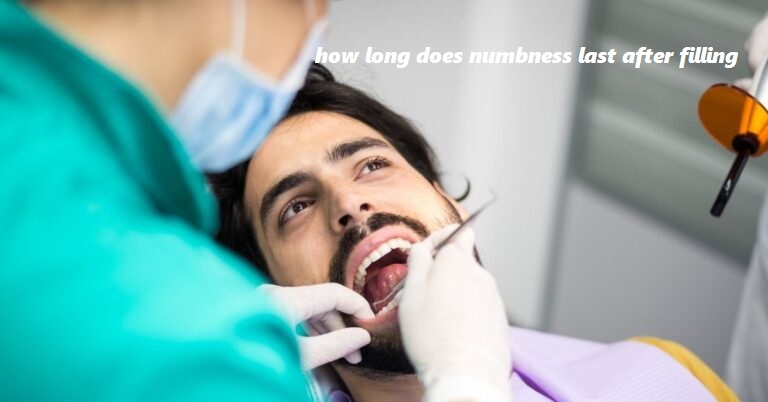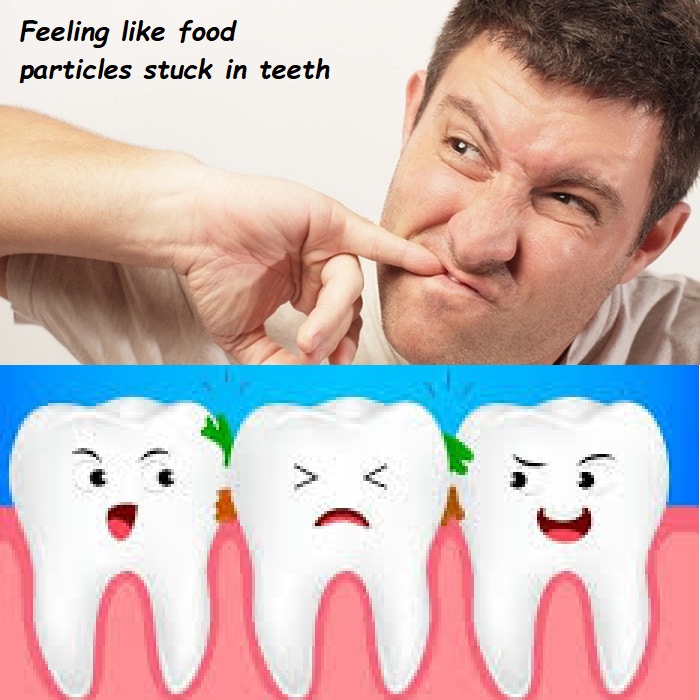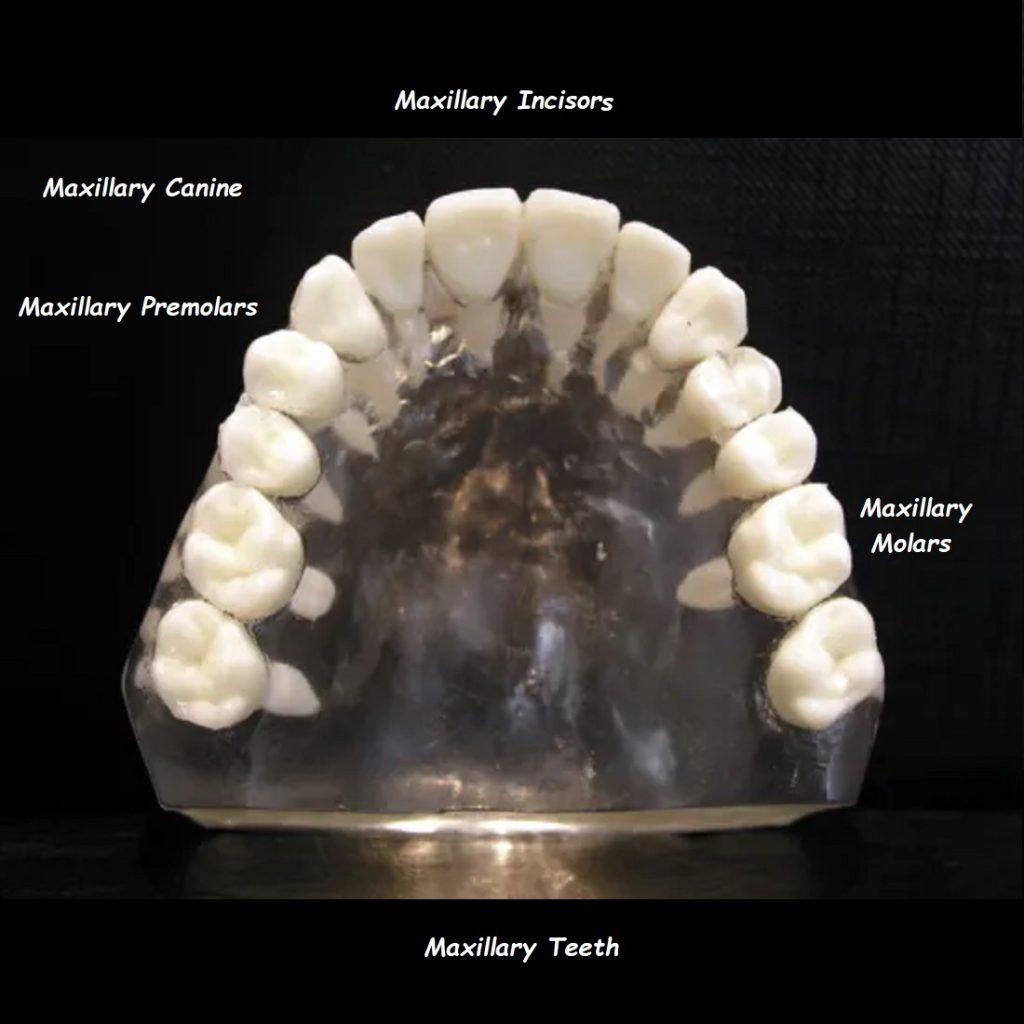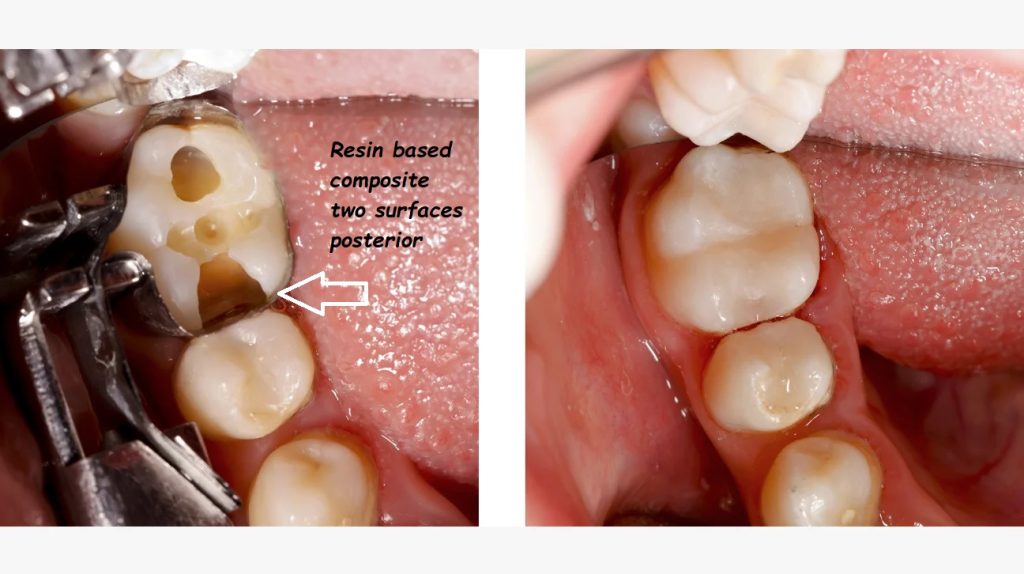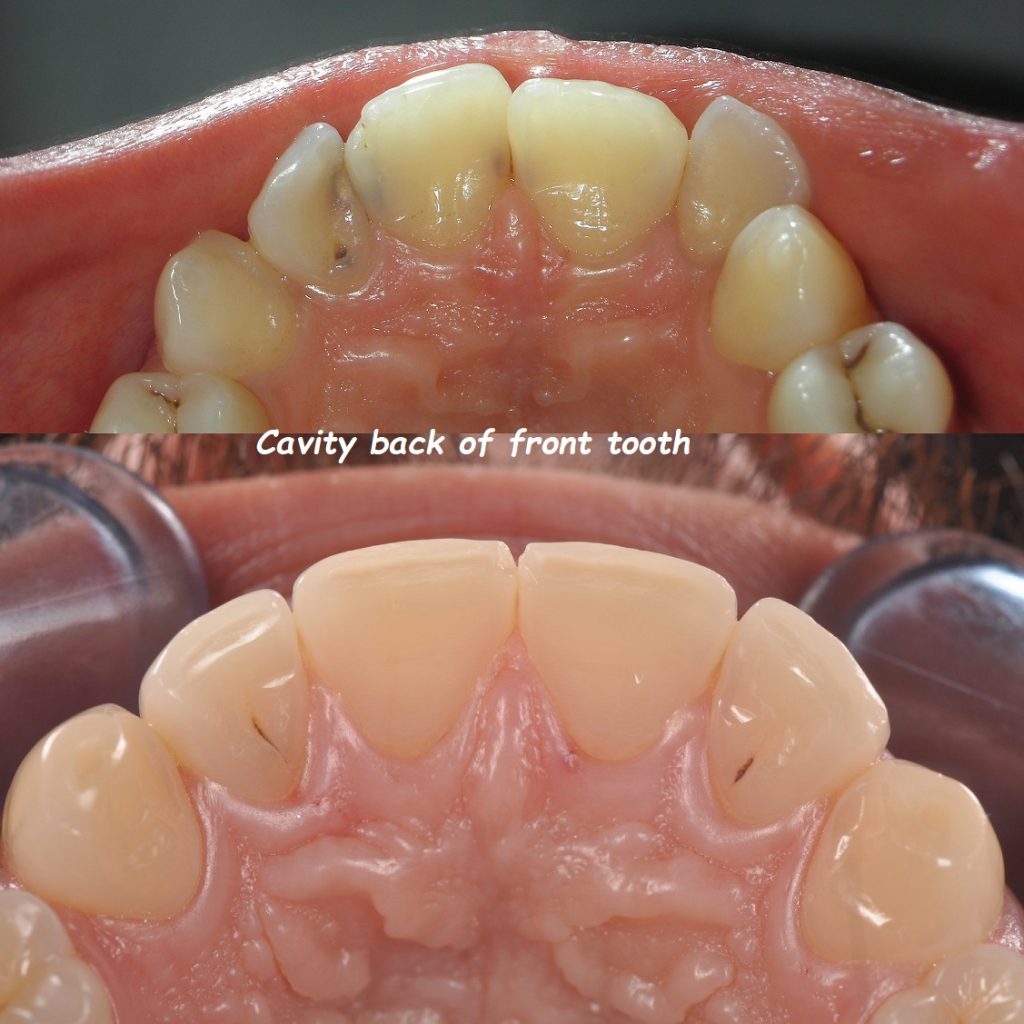Dental fillings are a common procedure used to treat cavities and restore the function and integrity of a tooth. One of the key aspects of this process is the use of local anesthesia to numb the area, ensuring that the patient experiences minimal discomfort during the procedure. A frequent question that arises post-treatment is, “how long does numbness last after a filling?” Understanding the factors that influence the duration of numbness can help alleviate concerns and provide a clearer picture of what to expect following a dental filling.
Understanding Dental Anesthesia
To appreciate how long numbness lasts after a filling, it is essential to understand the type of anesthesia used and how it works. Local anesthesia is administered to block nerve signals in a specific area of the mouth. The most commonly used local anesthetics in dentistry include lidocaine, articaine, and mepivacaine. These agents work by inhibiting the sodium channels in nerve cells, preventing the initiation and propagation of nerve impulses, thereby creating a numb sensation.
Factors Influencing the Duration of Numbness
- Type of Anesthetic Used: Different anesthetics have varying durations of action. For instance, lidocaine typically provides numbness for about 1 to 2 hours, whereas articaine may last slightly longer. The choice of anesthetic depends on several factors, including the length of the procedure and the patient’s medical history.
- Location of the Injection: The site of the anesthetic injection can influence how long numbness lasts after a filling. For example, injections in the lower jaw (mandible) may result in longer-lasting numbness compared to those in the upper jaw (maxilla) due to differences in bone density and nerve distribution.
- Dosage Administered: The amount of anesthetic administered also plays a crucial role. Higher doses tend to provide longer-lasting numbness. However, dentists carefully calculate the appropriate dosage to balance efficacy with safety.
- Individual Patient Factors: Each patient’s metabolism, body weight, and overall health can affect how quickly the anesthetic is metabolized and eliminated from the body. Younger patients or those with faster metabolisms may experience a shorter duration of numbness.
Typical Duration of Numbness After a Filling
On average, numbness from a dental filling lasts between 1 to 3 hours. However, this duration can vary significantly based on the factors mentioned above. Patients often begin to regain sensation gradually, with a tingling sensation indicating the return of normal nerve function.
Managing Numbness and Post-Operative Care
While numbness is generally harmless, it can be inconvenient and sometimes uncomfortable. Here are some tips to manage numbness after a filling:
- Avoid Chewing: It is advisable to avoid chewing on the numb side of the mouth to prevent accidental biting of the tongue, cheek, or lips, which can lead to injury.
- Be Cautious with Hot Foods and Beverages: Numbness can impair the ability to sense temperature, increasing the risk of burns from hot foods or drinks. Wait until the numbness subsides before consuming hot items.
- Monitor for Signs of Prolonged Numbness: In rare cases, numbness may persist longer than expected. If numbness lasts beyond 4 to 6 hours, it is important to contact the dentist as it could indicate a complication, such as nerve injury or an allergic reaction.
- Practice Good Oral Hygiene: Maintaining good oral hygiene is crucial to ensure the longevity of the filling and overall dental health. Brush and floss gently around the treated area to avoid dislodging the filling.
Potential Complications and When to Seek Help
While the majority of patients experience a straightforward recovery, there are instances where complications can arise, leading to prolonged numbness. Understanding these potential issues can help in identifying when to seek professional assistance.
- Nerve Damage: Although rare, nerve damage can occur during the injection process, especially if the needle comes into close contact with a nerve. Symptoms of nerve damage include prolonged numbness, tingling, or a burning sensation. If these symptoms persist beyond a few days, it is crucial to consult with the dentist.
- Allergic Reactions: Allergic reactions to local anesthetics are uncommon but possible. Signs of an allergic reaction include swelling, itching, rash, or difficulty breathing. Immediate medical attention is required if any of these symptoms occur.
- Infection: An infection at the injection site can cause extended numbness and discomfort. Symptoms of infection include increased pain, swelling, redness, or discharge. Prompt treatment with antibiotics may be necessary.
Preventive Measures and Best Practices
Preventing complications and ensuring a smooth recovery involves adhering to best practices before and after the filling procedure. Here are some preventive measures to consider:
- Inform the Dentist of Medical History: Providing a comprehensive medical history, including any known allergies or previous reactions to anesthesia, can help the dentist choose the most suitable anesthetic and dosage.
- Follow Pre-Procedure Instructions: Dentists often provide specific instructions to follow before the procedure, such as avoiding certain foods or medications. Adhering to these guidelines can enhance the effectiveness of the anesthetic and reduce the risk of complications.
- Post-Procedure Care: Following the dentist’s post-procedure care instructions is vital for a quick and smooth recovery. This may include avoiding strenuous activities, taking prescribed medications, and maintaining proper oral hygiene.
Common Questions and Misconceptions
Patients often have several questions and misconceptions regarding the duration and effects of numbness after a filling. Addressing these can provide clarity and reassurance.
- Is Prolonged Numbness Normal?: While numbness typically lasts 1 to 3 hours, some patients may experience it for a longer duration. However, numbness lasting beyond 6 hours should be evaluated by a dentist.
- Can Numbness Be Reduced?: The duration of numbness can sometimes be reduced by massaging the area gently or applying a warm compress. However, these methods should be used cautiously and only after consulting with a dentist.
- Is It Safe to Drive Home?: Numbness itself does not impair the ability to drive. However, the overall effect of the procedure, combined with the patient’s comfort level, should be considered. If feeling lightheaded or drowsy, it is safer to arrange for someone else to drive.
Advances in Dental Anesthesia
Advancements in dental anesthesia continue to improve patient experiences and outcomes. Researchers are exploring new anesthetic agents and techniques to enhance efficacy and reduce side effects. Some promising developments include:
- Buffered Anesthetics: Buffered anesthetics have a higher pH, making them less acidic and potentially reducing the sting of the injection. They may also provide a faster onset of numbness and a shorter duration of action.
- Computer-Controlled Anesthesia Delivery: Devices that control the rate of anesthetic delivery can improve patient comfort and precision. These systems reduce the variability in injection techniques and can minimize the risk of complications.
- Alternative Anesthetics: Research into new anesthetic compounds aims to find agents that offer longer-lasting numbness with fewer side effects. Innovations in this area could revolutionize dental procedures in the future.
Conclusion
In summary, understanding how long numbness lasts after a filling involves considering several factors, including the type of anesthetic used, the location of the injection, the dosage administered, and individual patient characteristics. On average, patients can expect numbness to last between 1 to 3 hours, though this can vary. Managing numbness effectively involves taking precautions such as avoiding chewing on the numb side and being cautious with hot foods and beverages. If numbness persists beyond 4 to 6 hours, or if any signs of complications arise, it is important to seek professional advice.
By staying informed and following best practices before and after the procedure, patients can ensure a smooth recovery and enjoy the benefits of their dental filling. As dental anesthesia technology continues to advance, the experiences and outcomes of patients undergoing fillings and other procedures are likely to improve further.
Remember, if you have any concerns about how long numbness lasts after a filling or if you experience any unusual symptoms, don’t hesitate to contact your dentist. They can provide the necessary guidance and support to ensure your oral health and comfort.
How Do I Make the Numbness Go Away After a Filling?
Numbness following a dental filling is caused by the local anesthetic administered to numb the area around the treated tooth. While this numbness is temporary and typically lasts a few hours, it can be inconvenient. Here are some tips to help alleviate numbness more quickly:
- Massage the Area: Gently massaging the numb area can increase blood flow, helping to disperse the anesthetic more quickly. Be cautious to avoid applying too much pressure or causing injury.
- Apply a Warm Compress: Placing a warm compress on the numb area can also promote blood circulation, which can help speed up the recovery process. Ensure the compress is not too hot to avoid burns.
- Stay Active: Physical activity can increase blood circulation throughout the body, including the mouth. Light exercises such as walking can help the anesthetic wear off more quickly.
- Hydrate: Drinking plenty of water helps flush out the anesthetic from your system. Staying hydrated is beneficial for overall recovery and health.
- Avoid Additional Stimulants: Refrain from consuming caffeine or alcohol, as these can interfere with the body’s natural recovery processes and potentially prolong numbness.
- Consult Your Dentist: If numbness persists longer than expected or is causing significant discomfort, contact your dentist for advice. They may recommend specific techniques or medications to alleviate prolonged numbness.
How Long Is My Face Numb After a Filling?
The duration of facial numbness after a dental filling varies based on several factors, including the type of anesthetic used, the location of the injection, and individual patient factors. Generally, patients can expect numbness to last between 1 to 3 hours.
- Type of Anesthetic: Different anesthetics have varying durations of action. Lidocaine, for example, typically provides numbness for about 1 to 2 hours, while articaine may last slightly longer.
- Injection Site: Numbness in the lower jaw (mandible) may last longer than in the upper jaw (maxilla) due to differences in bone density and nerve distribution. The lower jaw often requires a deeper injection, affecting the duration of numbness.
- Dosage Administered: The amount of anesthetic administered influences how long the numbness lasts. Dentists carefully calculate the dosage to ensure it is effective for the procedure while minimizing the duration of numbness.
- Individual Factors: Each patient’s metabolism, body weight, and overall health can affect how quickly the anesthetic is metabolized and eliminated from the body. Younger patients or those with faster metabolisms may experience shorter durations of numbness.
If numbness persists beyond 4 to 6 hours, it is advisable to contact your dentist for further evaluation.
Can I Eat While My Mouth Is Numb?
Eating while your mouth is numb is not recommended due to several risks and potential complications:
- Risk of Injury: Numbness impairs your ability to feel pain or pressure, increasing the risk of accidentally biting your tongue, cheek, or lips. These injuries can be painful and may require additional treatment.
- Difficulty Sensing Temperature: Numbness can affect your ability to detect the temperature of foods and beverages, increasing the risk of burns from hot items.
- Chewing Efficiency: Numbness can make it difficult to chew effectively, potentially leading to choking or improper digestion of food.
Can I Eat After a Filling When Numb?
It is best to wait until the numbness completely subsides before eating. However, if you must eat while still numb, follow these guidelines to minimize risks:
- Choose Soft Foods: Soft foods like yogurt, mashed potatoes, or smoothies are easier to manage and less likely to cause injury.
- Avoid Hot Foods and Beverages: Stick to lukewarm or cold items to prevent burns.
- Chew Slowly and Carefully: Pay extra attention while chewing to avoid accidental bites or injuries.
- Focus on the Non-Numb Side: If possible, chew on the side of your mouth that is not numb to reduce the risk of biting your cheek or tongue.
How to Get Rid of Mouth Numbness Quicker?
While you cannot eliminate numbness immediately, you can take steps to help it wear off more quickly:
- Increase Blood Circulation: Engage in light physical activity or gently massage the numb area to promote blood flow and help disperse the anesthetic.
- Warm Compress: Applying a warm compress to the numb area can enhance blood circulation and speed up the recovery process. Ensure the compress is warm, not hot, to avoid burns.
- Hydration: Drink plenty of water to help flush out the anesthetic from your system.
- Avoid Caffeine and Alcohol: These substances can interfere with the body’s natural recovery processes and prolong numbness.
- Stay Active: Light exercise can help increase overall blood circulation, aiding in the metabolization of the anesthetic.
If numbness persists longer than expected or causes significant discomfort, consult your dentist for further advice.
What Happens if a Dentist Hits a Nerve with a Needle?
Hitting a nerve with a needle during a dental injection is a rare but possible complication. This can occur during the administration of local anesthesia, particularly in the lower jaw where the inferior alveolar nerve is located. Here are the potential outcomes and necessary actions:
- Immediate Sensations: If a nerve is contacted during injection, you might experience a sudden, sharp pain or an electric shock-like sensation. This is typically a brief occurrence.
- Prolonged Numbness or Tingling: In some cases, hitting a nerve can result in prolonged numbness, tingling, or a burning sensation. This condition is known as paresthesia and can last from a few days to several weeks or, in rare cases, longer.
- Pain Management: If you experience prolonged discomfort, over-the-counter pain relievers or prescribed medications may help manage the pain.
- Nerve Healing: Nerves can heal over time, but the recovery process can be slow. If you experience prolonged symptoms, your dentist may refer you to a specialist, such as a neurologist or oral surgeon, for further evaluation and management.
- Follow-Up Care: It is important to keep your dentist informed about any unusual or prolonged symptoms following an injection. Regular follow-up appointments can help monitor your condition and ensure appropriate treatment if needed.
Conclusion
Understanding the factors that influence numbness after a filling and knowing how to manage it can significantly improve your post-procedure experience. While numbness is a temporary and generally harmless side effect of dental anesthesia, being informed about its duration and management can help alleviate concerns and promote a smoother recovery. Always consult your dentist if you have any questions or experience unusual symptoms following a dental procedure.
When Should I Be Worried About Numbness?
Numbness after a dental filling is a normal and temporary effect of the local anesthesia used during the procedure. However, there are specific situations when you should be concerned about prolonged or unusual numbness:
- Duration Exceeds Expected Time: If numbness lasts beyond the typical 4 to 6 hours, especially if it persists into the next day, it might indicate an issue. While some variance is normal, prolonged numbness warrants attention.
- Accompanying Symptoms: If numbness is accompanied by pain, swelling, bruising, or other unusual symptoms, it could indicate an infection, allergic reaction, or nerve damage. Immediate medical attention is recommended in these cases.
- Persistent Tingling or Burning Sensation: Numbness should gradually fade away. If you experience persistent tingling, burning, or electric shock-like sensations, it could be a sign of nerve involvement or damage.
- Difficulty in Oral Function: If numbness affects your ability to speak, chew, or swallow even after the expected period, it is advisable to seek professional advice.
- Loss of Motor Control: Difficulty in moving your tongue, lips, or facial muscles, or any signs of facial drooping, could indicate a serious issue and should be evaluated immediately.
If you experience any of these symptoms, contact your dentist promptly for further evaluation and appropriate management.
Can I Brush My Teeth After a Filling?
Yes, you can and should continue brushing your teeth after getting a dental filling. Maintaining good oral hygiene is crucial for the health of your teeth and gums. Here are some guidelines to follow:
- Wait for Numbness to Subside: To avoid accidental injury to the numb area, it is advisable to wait until the numbness subsides before brushing. This helps prevent biting your cheek, lips, or tongue.
- Gentle Brushing: Use a soft-bristled toothbrush and gentle strokes to clean the area around the new filling. Avoid aggressive brushing, which can irritate the treated area.
- Use Mild Toothpaste: Opt for a non-abrasive toothpaste to prevent any discomfort or irritation around the filling. Avoid whitening or tartar control toothpaste, which can be harsher on sensitive areas.
- Flossing: Floss gently around the filled tooth to remove any trapped food particles and prevent plaque buildup. Be cautious to avoid putting too much pressure on the filling initially.
- Rinse with Warm Salt Water: Rinsing your mouth with warm salt water can help soothe the area and promote healing. This can be done after meals and before bedtime.
If you experience any sensitivity or discomfort while brushing, consult your dentist for specific recommendations tailored to your situation.
How to Stop Being Numb?
While you cannot immediately stop numbness after receiving local anesthesia, there are several methods to help expedite the return of normal sensation:
- Increase Physical Activity: Light exercise, such as walking, can help increase overall blood circulation, including in the mouth, which can aid in the faster metabolization of the anesthetic.
- Massage the Area: Gently massaging the numb area can promote blood flow and help disperse the anesthetic. Be careful not to apply too much pressure or cause injury.
- Apply Warm Compress: Using a warm compress on the affected area can also stimulate blood flow. Ensure the compress is warm, not hot, to avoid burns.
- Stay Hydrated: Drinking plenty of water helps flush the anesthetic out of your system. Staying hydrated is beneficial for overall health and recovery.
- Avoid Stimulants: Refrain from consuming caffeine or alcohol, as these can interfere with the body’s natural recovery processes and potentially prolong numbness.
- Oral Stimulation: Chewing sugar-free gum can stimulate saliva production and help increase blood flow to the numb area, potentially reducing the duration of numbness.
Can a Dentist Mess Up a Filling?
While dental professionals strive to provide high-quality care, errors can occasionally occur. Here are some ways a filling might be compromised and what to look out for:
- Improper Filling Placement: If the filling is not placed correctly or does not properly adhere to the tooth, it can lead to gaps, which can harbor bacteria and lead to further decay.
- Overhangs and Rough Edges: Fillings with overhangs or rough edges can make cleaning difficult, increasing the risk of plaque accumulation and gum irritation.
- Incorrect Bite Adjustment: A filling that is too high or uneven can affect your bite, leading to discomfort, tooth sensitivity, or jaw pain. If you notice any bite issues, contact your dentist for an adjustment.
- Material Failure: In some cases, the filling material itself may fail, crack, or wear down prematurely. Composite fillings, for instance, may not be as durable as amalgam fillings and can require replacement sooner.
- Infection or Inflammation: If the filling process is not sterile, it can lead to infection or inflammation of the tooth pulp or surrounding gum tissue. Symptoms include persistent pain, swelling, or redness.
If you suspect an issue with your filling, such as persistent pain, sensitivity, or an uneven bite, it is important to return to your dentist for an evaluation and necessary corrections.
What to Avoid After a Filling?
After getting a dental filling, taking certain precautions can help ensure a smooth recovery and prolong the life of the filling:
- Avoid Chewing on the Numb Side: Until the anesthesia wears off completely, avoid chewing on the side of your mouth that is numb to prevent accidental biting of your cheek, tongue, or lips.
- Hard and Sticky Foods: Refrain from consuming hard or sticky foods like nuts, candies, or chewing gum for at least 24 hours. These can dislodge or damage the new filling.
- Hot Foods and Beverages: Avoid hot foods and beverages until the numbness subsides to prevent burns and discomfort, as numbness can impair your ability to sense temperature.
- Sugary Foods and Drinks: Limit your intake of sugary foods and drinks, as they can contribute to tooth decay and compromise the integrity of the filling.
- Heavy Chewing and Biting: Avoid heavy chewing or biting on the filled tooth for a day or two. Give the filling time to set properly and become more resistant to pressure.
- Tobacco Products: Avoid smoking or using other tobacco products, as they can delay healing and contribute to gum disease and other oral health issues.
- Alcohol: Refrain from consuming alcohol, especially if you have been prescribed pain medication or antibiotics, as it can interfere with the effectiveness of the medication and delay healing.
Is Ice Cream Good for a Numb Mouth?
While ice cream might seem like a comforting option after dental work, it is not necessarily the best choice when your mouth is still numb. Here are some considerations:
- Temperature Sensitivity: Although ice cream is cold and can be soothing, it can also cause discomfort if your teeth are sensitive following the filling.
- Risk of Biting: Eating ice cream while your mouth is numb increases the risk of accidentally biting your tongue, cheek, or lips, leading to injury.
- Sugary Content: Ice cream is high in sugar, which can contribute to tooth decay, especially around the new filling. Opting for sugar-free or low-sugar alternatives can be a better choice.
- Eating Difficulty: Numbness can make it difficult to properly manage and swallow food. Ice cream can be slippery and might pose a choking hazard if not eaten carefully.
If you do decide to eat ice cream, wait until the numbness subsides and consume it in moderation. Consider choosing softer, sugar-free options and eating slowly to avoid any issues.
